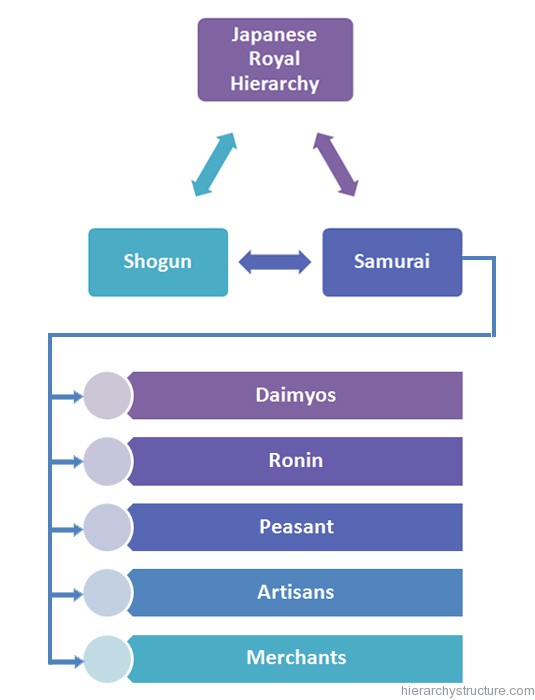The Japanese royal hierarchy was started from the Feudalist era, which resembled as that of the middle ages in the European countries. During that time, Japan was split into various provinces. The provinces were ruled by the lords known as the Daimyos. Various classes were present in the vast territory of Japan. There were warriors, peasants, Samurai’s. The Samurai’s helped the Daimyos for their economic stability. There were two high ranked social classes namely Daimyos and Shoguns. Both the classes dominated the other inferior classes of Japan.

Let’s discuss the various classes of the Japanese royal hierarchy in details:
- Shogun: The symbols of the Shogun were tents, which are used when the military soldiers fought in the fields. The tent was the sign of the administration of the Shoguns, which is named as Bafuku. The name of the first Shogun was Yoritomo Minimoto. He established his own administration and his family was the main source of political power for the country.
- Samurai: The Samurai community comes under the Shogunate community and it deals with all the military affairs of the country. They have all the privileges to assign duties and even punishments to the warriors. They also provide support to the family of the warriors in the time of need.
The Samurai community is one of the important classes for the country because they ensure that their country is protected from any type of internal and external wars.
As the Samurai’s are powerful members of the military forces, they maintain a high social status.
- Daimyos: This part of community also holds a significant amount of power. The Daimyos and the Samurai’s have a deep interrelation between them. The Daimyos provides the Samurai’s with the income from their agricultural lands. In turn, the warriors or the Samurai’s protect their lands and fight with their enemies.
- Ronin: Ronin is another class of the Samurai community. The difference between Samurai and Ronin is that the later has a lower social status than the former and they do not serve the Daimyos like that of the Samurai’s. The Ronin class has no political power and they depend on others for their economic needs.
- Peasant: Ninety percent of the Japan’s population is made up of the Peasant class. They work as farmers in the agricultural estates of the Daimyos and keep a part of the whole production that come up. In this way, they meet their personal needs. They find very less time for social interactions because of their busy schedules.
- Artisans: This group of people belongs to the Komin class. They craft various art items, cooking pots, farm tools, weapons and utensils. They are highly respected for their innovative art and craft designs. They market their designs all over Japan to make their living.
- Merchants: The merchants belong to the class Shomin. In the earlier times, they were being seen as inferior classes. They were even restricted to social settings and to interact with people in the past. But, in this era, they have got a much of social freedom. Now, they can take part in the community activities and can mingle with other people in social settings.
As a conclusion, it can be said that the classes Shoguns and Daimyos dominated the inferior classes in Japan. In spite of this fact, all the classes are interdependent on each other for their livelihood.
To know more about Japanese Racial Hierarchy Click Here
